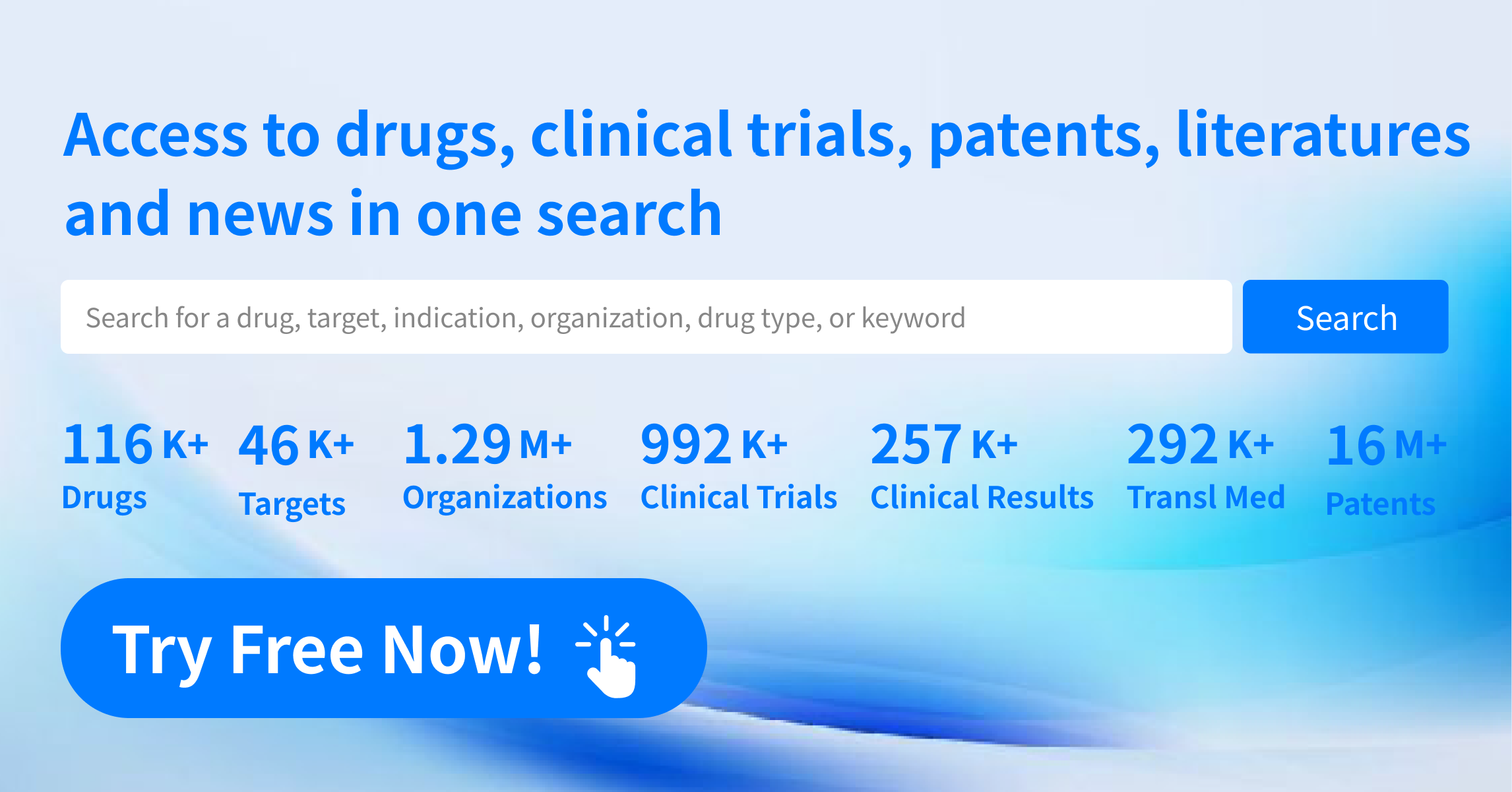June 2025 Drug Approvals: Breakthroughs in Gout, Cancer & RSV Prevention
In June 2025, several breakthrough drugs received their first global approvals and market launches, marking significant advances in therapeutic innovation.
1. Genakumab (Firsekibart)
Firsekibart (Genakumab), developed by Changchun Genescience Pharmaceutical, is a fully human monoclonal antibody targeting interleukin-1β (IL-1β). It functions as an IL-1β inhibitor and was approved in China on June 30, 2025, for the treatment of gouty arthritis, especially in patients who are intolerant or unresponsive to NSAIDs or colchicine. The approval addresses a significant gap in long-acting, targeted anti-inflammatory therapies in China, offering a new option for over 14 million gout patients.
Gout is a chronic inflammatory disease caused by urate crystal deposition in joints. It is often referred to as the "king of pain" due to its severe and recurrent attacks. The underlying pathology involves activation of the NLRP3 inflammasome in macrophages, leading to a surge in IL-1β secretion, which triggers a cascade of inflammatory responses.
Firsekibart is a fully human anti-IL-1β monoclonal antibody that binds specifically to IL-1β and neutralizes its biological activity, blocking receptor interaction and suppressing inflammation at its source. This mechanism allows for rapid pain relief during acute attacks and sustained anti-inflammatory effects during intercritical periods, helping reduce recurrence rates and inflammatory flares during urate-lowering therapy. It may also offer systemic benefits for cardiorenal and metabolic comorbidities.
The approval was based on data from a randomized, double-blind, multicenter Phase III trial involving 313 patients with acute gout flares. Results showed that a single dose of Firsekibart provided pain relief within 6 hours, with a comparable 72-hour efficacy to compound betamethasone. The primary endpoint—the difference in VAS pain score at 72 hours—was -3.32 mm (95% CI: -7.56, 0.91), confirming non-inferiority.
Notably, Firsekibart demonstrated superior performance in preventing recurrence:
·Median time to first gout recurrence: not reached (Firsekibart) vs. 45 days (steroid group)
·Risk reduction in first recurrence within 6 months: up to 90%
·Recurrence reduction over 24 weeks: 87%, with 85.3% of patients remaining recurrence-free—the best result among its class.
The drug was well tolerated, with a treatment-related adverse event rate similar to the control group and no serious adverse events reported. Future indications for Firsekibart may include cardiovascular inflammation, osteoarthritis, diabetes, obesity, and tumor microenvironment modulation, suggesting broad clinical potential.
2. Gemcitabine (AVGEMSI, D07001-Softgel)
Gemcitabine, a small-molecule chemotherapeutic agent originally developed by FUJIFILM Corporation, received its first approval in the United States on June 27, 2025, for the treatment of multiple malignancies, and was granted orphan drug designation.
Gemcitabine is a pyrimidine-based antitumor drug with a mechanism of action similar to cytarabine (Ara-C). It is activated intracellularly by deoxycytidine kinase (dCK) and metabolized by cytidine deaminase. Once metabolized, its active form incorporates into DNA during the G1/S phase, inhibiting DNA synthesis. Unlike cytarabine, gemcitabine also inhibits ribonucleotide reductase, decreasing intracellular dNTP pools and further impairing DNA replication. Additionally, it inhibits deoxycytidine deaminase, reducing the degradation of its own active metabolites—effectively self-potentiating its efficacy.
These pharmacodynamic features give gemcitabine a broader antitumor spectrum than cytarabine, and it has demonstrated efficacy across multiple solid tumors, including metastatic breast cancer, non-small cell lung cancer (NSCLC), ovarian cancer, and pancreatic adenocarcinoma.
Clinically, gemcitabine has become a standard first-line therapy for locally advanced and metastatic NSCLC. A pivotal Phase III trial in advanced NSCLC patients showed that the gemcitabine + cisplatin combination significantly improved overall survival compared to cisplatin alone:
·Median OS: 10.7 months (combination) vs. 8.6 months (cisplatin monotherapy)
·The difference was statistically significant (p < 0.05)
Gemcitabine’s safety profile has been extensively studied. While myelosuppression, gastrointestinal discomfort, and fever are common adverse effects, they are generally manageable and acceptable, confirming the drug’s suitability for routine clinical use in oncology.
3. Mazdutide (IBI362)
Mazdutide (also known as IBI362) is a synthetic polypeptide drug co-developed by Eli Lilly & Co. and Innovent Biologics. It acts as a dual agonist of GLP-1 and GIP receptors, designed for the treatment of endocrine and metabolic disorders. On June 24, 2025, it received its first market approval in China, with an indication for obesity and overweight. The drug also shows promising potential in other metabolic conditions such as type 2 diabetes, obstructive sleep apnea, non-alcoholic steatohepatitis (NASH), and various forms of heart failure.
Mazdutide exerts synergistic effects by simultaneously activating GLP-1 and glucagon (GCG) receptors. Activation of GLP-1 receptors delays gastric emptying, suppresses appetite, and enhances satiety, leading to reduced caloric intake. Activation of the GCG receptor promotes lipolysis and increases energy expenditure, thereby enhancing weight loss. This dual mechanism provides superior efficacy compared to single-target agents, positioning Mazdutide as a representative of next-generation metabolic regulators.
Clinical studies in Chinese populations have demonstrated significant weight loss and good safety. The pivotal Phase III GLORY-1 trial, published in the New England Journal of Medicine (NEJM), enrolled 610 Chinese subjects who were overweight or obese. After 48 weeks of once-weekly subcutaneous injections, the 4 mg group experienced a mean weight loss of 11.00%, and the 6 mg group lost 14.01%, compared to 0.3% in the placebo group. Notably, nearly 50% of patients in the 6 mg group achieved at least 15% body weight reduction, with effects evident as early as week 32. Beyond weight reduction, Mazdutide also improved glycemic control, lipid profiles, and blood pressure, making it particularly beneficial for Chinese patients with metabolic syndrome.
In terms of safety, Mazdutide was well tolerated. The most common adverse events were mild to moderate gastrointestinal symptoms, including nausea, vomiting, and diarrhea, which mostly occurred during early treatment and resolved over time. The once-weekly injection regimen enhances patient adherence and supports long-term disease management.
4. Tetravalent Influenza Vaccine
Developed by Fosun Apexvac (Dalian) Biopharmaceutical Co., Ltd., the tetravalent split inactivated influenza vaccine was first approved in China on June 17, 2025, for the prevention of influenza virus infection. The vaccine is produced using internationally standardized embryonated egg-based manufacturing techniques, free from antibiotics and preservatives, and provides broad protection by inducing immunity against four different influenza virus strains.
Influenza is an acute respiratory infectious disease caused by influenza viruses. Due to the virus’s high genetic variability and broad host range, it spreads easily among humans, resulting in 3–5 million severe cases and 290,000–650,000 deaths globally each year. The World Health Organization (WHO) emphasizes that vaccination is the most effective method for influenza prevention, especially for high-risk individuals and their close contacts.
This tetravalent vaccine contains inactivated antigens from four influenza strains: two A subtypes (e.g., H1N1 and H3N2) and two B lineages. The viruses are chemically split to release key antigens, such as hemagglutinin (HA) and neuraminidase (NA), which trigger immune responses. Upon administration, antigen-presenting cells (e.g., dendritic cells) process these viral antigens and present them to helper T cells, which in turn activate B cells to produce strain-specific antibodies—especially anti-HA antibodies capable of neutralizing the virus. The vaccine also induces memory B and T cells, enabling rapid immune responses upon future exposure to similar strains.
5. 13-Valent Pneumococcal Polysaccharide Conjugate Vaccine (CRM197, TT)
The 13-valent pneumococcal polysaccharide conjugate vaccine, developed by CanSino Biologics, was first approved in China on June 17, 2025, for the prevention of Streptococcus pneumoniae infections. This multivalent conjugate vaccine targets 13 distinct pneumococcal serotypes responsible for pneumonia, meningitis, septicemia, and other invasive diseases.
The vaccine functions by covalently linking capsular polysaccharide antigens of pneumococcal serotypes to protein carriers such as CRM197 (a non-toxic diphtheria toxin mutant) and tetanus toxoid (TT). This conjugation converts the normally T cell-independent polysaccharides into T cell-dependent antigens, capable of eliciting a stronger and longer-lasting immune response, particularly in infants and young children.
After administration, the conjugated antigens are taken up and processed by antigen-presenting cells, then presented to CD4+ T helper cells, which activate B cells to generate serotype-specific antibodies. Additionally, the vaccine promotes the formation of memory B cells, providing long-term protection. This mechanism enables the immune system to mount a robust defense against the 13 pneumococcal serotypes, significantly reducing the risk of invasive pneumococcal disease (IPD). The vaccine is especially effective in pediatric populations, offering enhanced and durable immunity.
6. Garadacimab
Garadacimab (formerly CSL312) is a fully human recombinant IgG4/λ monoclonal antibody developed by CSL Behring LLC. It was approved in the United States on June 16, 2025, for the treatment of hereditary angioedema (HAE), with additional potential applications in diseases such as idiopathic pulmonary fibrosis.
HAE is a rare but potentially life-threatening genetic disorder that affects approximately 1 in 50,000 individuals. It is characterized by recurrent, painful episodes of swelling (angioedema), which can involve the larynx, gastrointestinal tract, and other critical areas. Garadacimab exerts its therapeutic effect by selectively binding to and inhibiting coagulation factor XIIa (FXIIa), a key initiator in the contact activation system involved in inflammatory and coagulation cascades.
By targeting FXIIa, Garadacimab helps reduce pathological processes such as vascular leakage and inflammation, which are central to HAE pathogenesis. FXII is particularly important in HAE patients due to its role in activating the kallikrein-kinin system, leading to bradykinin-mediated angioedema. Garadacimab features an unusually long CDR-H3 loop, allowing specific binding to the β-chain of FXIIa, thereby blocking its protease activity and downstream pro-inflammatory and pro-coagulant pathways.
The FDA approval was supported by efficacy and safety data from the pivotal Phase III VANGUARD trial (NCT04656418) and its open-label extension (NCT04739059). VANGUARD evaluated Garadacimab as a routine prophylactic treatment in 64 patients aged ≥12 years with Type I or II HAE, all of whom experienced ≥2 attacks during the run-in period and discontinued prior prophylactic therapies. Participants were randomized 3:2 to receive 400 mg loading dose followed by 200 mg monthly Garadacimab (n=39) or matched placebo (n=25) for 6 months. On-demand medication for breakthrough attacks was allowed.
At baseline, 59.4% of participants had ≥3 HAE attacks per month (mean: 3.07/month in the Garadacimab group vs. 2.52/month in the placebo group). Garadacimab significantly reduced attack frequency and demonstrated a favorable safety profile, reinforcing its potential as a long-term preventive therapy for HAE. Additional trials in fibrotic and inflammatory diseases are ongoing, highlighting its broad therapeutic promise.
7. Taletrectinib
Taletrectinib, also known by its compound name ADCT-601 or AnHeart Therapeutics' ROS1 inhibitor, is a next-generation small molecule tyrosine kinase inhibitor (TKI) targeting ROS1-positive non-small cell lung cancer (NSCLC). Co-developed by AnHeart Therapeutics (Hangzhou) and Innovent Biologics, Taletrectinib received FDA approval on June 11, 2025, for the treatment of locally advanced or metastatic ROS1-positive NSCLC.
ROS1 gene rearrangements are oncogenic drivers found in approximately 1–2% of NSCLC cases and are associated with poor response to standard chemotherapy. Taletrectinib is a highly potent and selective ROS1 TKI, designed to inhibit the aberrant signaling caused by ROS1 fusions, which drive tumor growth in affected patients. Notably, it also shows efficacy against certain resistance mutations, offering therapeutic options for both treatment-naïve patients and those with acquired resistance to first-generation ROS1 inhibitors like crizotinib.
FDA approval was based on results from two pivotal Phase II global multicenter studies, TRUST-I and TRUST-II, which evaluated the efficacy and safety of Taletrectinib in ROS1-positive advanced NSCLC across both treatment-naïve and pretreated populations. Patients received 600 mg orally once daily, and endpoints included objective response rate (ORR), duration of response (DoR), progression-free survival (PFS), and intracranial response in patients with brain metastases.
Taletrectinib demonstrated robust clinical activity in both cohorts. It achieved high ORR, prolonged PFS, and demonstrated notable intracranial efficacy, making it a strong candidate for managing CNS-involved disease. Safety outcomes were favorable, with manageable adverse events, supporting its use as a next-generation targeted therapy for ROS1-positive NSCLC. Its ability to overcome resistance mechanisms further positions it as a valuable treatment option for patients who have progressed on earlier ROS1-targeted agents.
8. Clesrovimab
Clesrovimab (MK-1654), developed by Merck Sharp & Dohme Corp., is a long-acting monoclonal antibody that received its first FDA approval on June 9, 2025, for the prevention of respiratory syncytial virus (RSV) infection.
Clesrovimab specifically targets the RSV fusion (F) protein, a critical viral surface protein required for viral entry into host cells. By binding with high affinity to the F protein, Clesrovimab not only blocks the fusion process between the virus and host cell membranes—thereby preventing viral entry—but also enhances the immune system’s ability to recognize and eliminate the virus. Importantly, since the F protein is highly conserved across all RSV subtypes, Clesrovimab exhibits broad-spectrum antiviral activity against a wide range of RSV strains.
As a passive immunization therapy, Clesrovimab’s extended half-life allows it to deliver direct, rapid, and long-lasting protection against RSV infection in healthy preterm infants, full-term infants, and high-risk infants. The antibody is designed to protect infants during their first RSV season against mild, moderate, and severe RSV disease. Data from the pivotal Phase 2b/3 CLEVER trial demonstrated that a single dose of Clesrovimab reduced medically attended RSV lower respiratory tract infections by 60.5% and hospitalizations due to RSV by 84.3% within 150 days post-treatment.
Further evidence from the SMART Phase 3 study validated Clesrovimab’s efficacy and safety in both preterm and full-term infants, as well as high-risk populations, where it showed superior performance compared to existing standard preventive therapies.
9. Amlodipine Besylate/Indapamide/Telmisartan
Amlodipine Besylate/Indapamide/Telmisartan, marketed as Widaplik, is a fixed-dose triple combination therapy developed by George Medicines Pty Ltd. It received its first FDA approval on June 5, 2025, for the treatment of hypertension. Widaplik is the first and currently only FDA-approved triple-combination product specifically designed for patients who may require multiple antihypertensive agents to achieve optimal blood pressure control.
Widaplik combines three active components, each with a distinct antihypertensive mechanism:
·Amlodipine, a calcium channel blocker, relaxes vascular smooth muscle by inhibiting calcium influx into cardiac and arterial wall cells.
·Telmisartan, an angiotensin II receptor blocker (ARB), prevents vasoconstriction and reduces fluid retention by blocking angiotensin II.
·Indapamide, a thiazide-like diuretic, promotes the excretion of sodium and water, further lowering blood pressure.
Approval was supported by two pivotal clinical studies:
Study 1 enrolled 295 patients with systolic hypertension who were either treatment-naïve or on monotherapy. Following a 2-week placebo run-in, patients were randomized to receive different doses of Widaplik or placebo. At week 4, both Widaplik doses significantly reduced home-measured systolic blood pressure compared to placebo (P < 0.0001), with most of the antihypertensive effect observed within the first two weeks.
Study 2 compared Widaplik to dual-component therapies. At week 12, Widaplik achieved superior reductions in home systolic blood pressure versus all dual-therapy arms (P < 0.0001). The effect was consistent across age, sex, and racial subgroups.
In terms of safety, Widaplik was generally well tolerated. The most common adverse events were symptomatic hypotension and electrolyte imbalances such as hyponatremia and hypokalemia.
Summary
June 2025 marked the approval and launch of several milestone new drugs in the global pharmaceutical landscape, representing significant advances across multiple therapeutic areas. From targeted precision therapies like Taletrectinib and Garadacimab, to multimodal combination regimens like Widaplik, and passive immunization agents such as Clesrovimab and Genakumab, to next-generation vaccines like the quadrivalent influenza vaccine and the 13-valent pneumococcal conjugate vaccine, these innovative products exemplify the synergistic potential of biologics and small molecules. Together, they are not only enhancing treatment efficacy across various diseases but are also shaping the future of personalized, effective, and sustainable medicine.
How to obtain the latest research advancements in the field of biopharmaceuticals?
In the Synapse database, you can keep abreast of the latest research and development advances in drugs, targets, indications, organizations, etc., anywhere and anytime, on a daily or weekly basis. Click on the image below to embark on a brand new journey of drug discovery!




